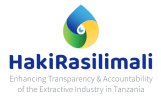
BACKGROUND & INTRODUCTION:
The Tanzania Development Vision 2025 (TDV 2025) was developed in the late 1990s in order to guide the economic and social development determinations up to the year 2025. The Vision has been implemented through the Long-Term Perspective Plan (2011/12 – 2025/26) sequenced in three phases[1][2][3][4] to ensure that available national resources are organized in a manner to facilitate the realization of the TDV 2025’s.
In conjunction with the National Strategy for Growth and Reduction of Poverty –NSGRP (famously known as MKUKUTA)[5], the second implementation phase of the TDV 2025 “Nurturing Industrialization for Economic Transformation and Human Development”-2016/17 – 2020/21, highlights priorities and areas of interventions. I.e. High-quality livelihood; Peace, stability and unity; Good governance; a well-educated and learning society; and a competitive economy. These priorities are necessary to enhance growth, transformation and poverty reduction in which, the government seeks to attract investments in building an industrial state by investing in value addition activities. The second phase also looks at improving the country’s human development and social equity indices in the global ranking, and enhancing production and trading capabilities by fostering value chains and competitiveness.
For that, the government of Tanzania (GoT) has set a budget tune of Tanzanian Shillings 11.2 trillion equivalent to 9.2%[6] of the total national budget (implementing period) to the interventions under the flagship projects whereby, the extractive sector is seen as the driving force. i.e Construction of the Pipeline to transport Crude Oil from Uganda to Tanzania; Construction of the Liquefied Natural Gas plant; Construction of the Mchuchuma Coal-Fired Thermal Plant and the Liganga Iron Ore mining and Steel Complex Plant among others[7].
Therefore, the government is required to raise tax and revenue collection (annually) from different sectors so as to effect the implementation of the TDV 2025.
The GoT has earmarked the extractive sector as an important segment to stimulate and facilitate the realization of the FYDP II and its capability to contribute to all 17 Sustainable Development Goals (SDGs). By 2025, the sector is expected to contribute 10% of the Gross Domestic Product (GDP). Despite the influx and flows of Foreign Direct Investments (FDI), the current contribution still stands at 35% of the national exports, 5% to GDP[1] (which is more than 66% of the expected timeframe to reach 10% of the GDP contribution by 2025) and 1 % of the total government revenue[2]. Such contribution is expected to foster economic development by providing opportunities for decent employment, business development, increased fiscal revenues, and infrastructure linkages. Despite impressive initiatives and observed government achievements in ensuring that citizens reap maximum benefits from the sector i.e legal and institutional reforms, enhancement of the ASM sector, controlling leakages (UKUTA- Mererani wall) and government commitment to increase revenue collection, there are still issues that remain unsolved.
For example, the extractive sector is still prone to fiscal leakages; inflated expectations of massive hidden margins that has contributed to policy instability and undermine accountability of government to its citizens.At the same time, the capacity of the government and the Parliament to effectively regulate and monitor extractive revenues and budgets has been questioned for not meeting expectations i.e. In most cases, the government agencies have failed to meet the targeted revenue collection in each of the budget year. The discussion around extractive resources and the industrialization agenda vs budget and revenue processes has generated stakeholders’ concerns: is it utopian or reality? This discussion has remained as part of the political aspiration but has failed to address the existing linkages of the sector with the wider economic initiatives; Inadequacy of institutions especially responsible for enhancing transparency and accountability due to limited budget allocation; Although the recent legislative changes are meant to address some of the loopholes, existing MDAs and PSA have not fully aligned to the new legal regime, hence there could still be loopholes for revenue losses, tax evasion, and illicit transfer pricing, as well as stimulated negative social and economic impacts of activities in the sector.
Therefore, being cognizant of the sector’s significance to the country’s economy, HakiRasilimali, a platform with a leaning towards enhancing extractive sector transparency and accountability agenda has carried out an analysis of the budget trends for the Ministry of Minerals in reflection to the realization of the extractive related targets as set in the Five Year Development Plan (FYDP II 2016/17- 2020/21).
The main objective of this analysis is not only to advocate for the effective formulation and reforms of policies and laws which govern the Extractive Industries in Tanzania, but also offering recommendations to further discussions and decisions around future Ministerial budgets and the preparation for the 3rd phase of the Tanzania Development plan 2025.
To start with, this position provides a concrete analysis of the Ministry of Minerals budget trends for last five (5) years looking at specifics such as; the mysteries around disclosure and access to information; state participation in the Mining sector (with focus on STAMICO); Local Content (examining the level and quality of citizen participation); Artisan and Small-Scale Mining (ASM) formalization as potential route to building local content in the mining sector; environment and Climate change and how it is embraced within the mining sector are discussed. Read more: HAKIRASILIMALI 5 YEAR BUDGET STATEMENT-MINISTRY OF MINERALS
[1] Bomani report 2010
[3] A Civil Society Platform working on strategic and advocacy issues around the sector for the purpose of enhancing transparency and accountability: www.hakirasilimali.or.tz :
[1] “Unleashing Tanzania’s Latent Growth Potentials”: The First Five Year Development Plan 2011/12-2015/16 (FYDP I)-
[2] “Nurturing and Industrial Economy”: The Second Five Year Development Plan 2016/17-2020/21 (FYDP II)
[3] Realizing Competitiveness-led Export Growth: The Third Five Year Development Plan 2021/22-2025/26 (FYDP III)
[4] Annual Development Plans (ADPs) to implement the FYDPs
[5] https://www.mof.go.tz/mofdocs/DPE/MKUKUTA%20II%20English.pdf
[6] Nurturing and Industrial Economy”: The Second Five Year Development Plan 2016/17-2020/21 (FYDP II)
[7] Ibid



